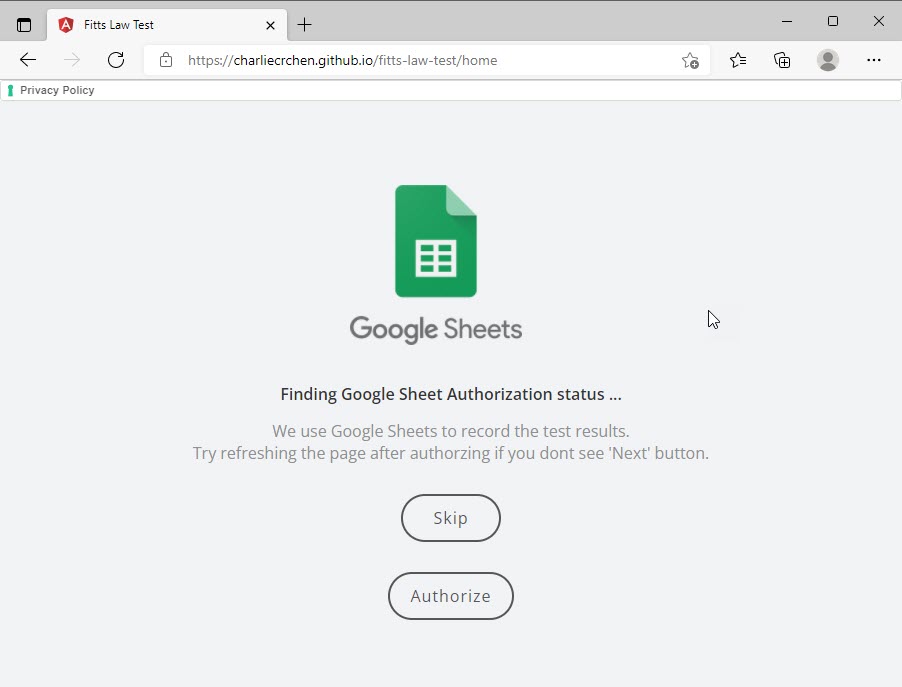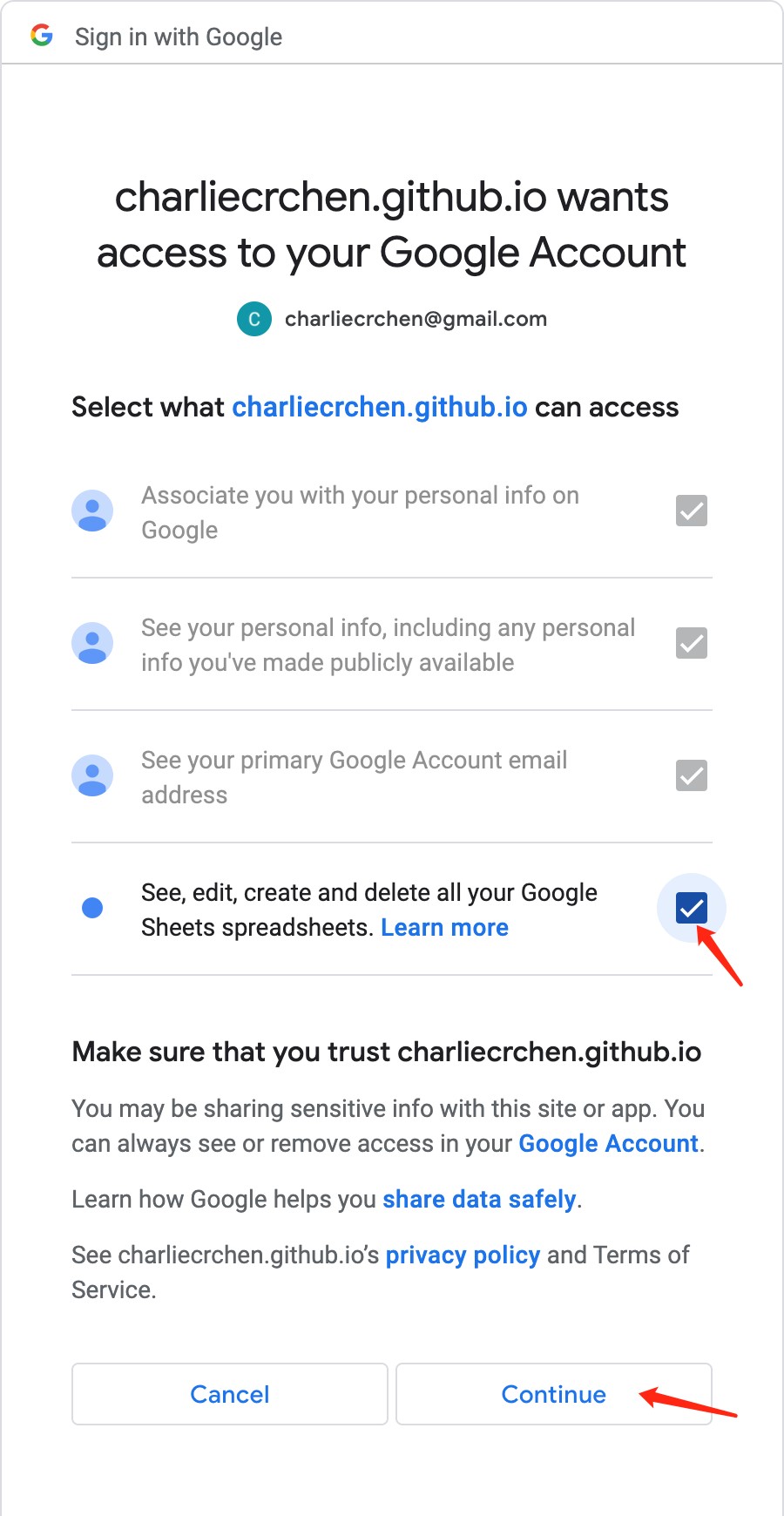Test of Pointing Speed and Accuracy
for Homework 1: Evaluate Pointing Devices
This page discusses the homework 1 Fitts Law test website, authored by the TA for 2019, Asit Parida, and our TA, Chaoran Chen. See the homework 1 instructions for what to do with the results.
Instructions
(The software for this homework is still new -- let me know if there are issues, questions or bugs!)
Run the test from: https://charliecrchen.github.io/fitts-law-test/
We are collecting all the results from everyone's runs in a Google Sheet, which will be available to everyone after the homework is turned in. To allow the test software to access the Google Sheet, you need to login and give it permission.
Click the Authorize button to enable this run to be collected. (Note: if you are just checking how it looks and not running a real test, please use "Skip".).
Be sure to login with your CMU Andrew credentials, like I would use: bm1x@andrew.cmu.edu and my andrew password.
2. Unfortunately, our test app is not (yet) validated by Google, so you need to confirm this is allowed three times! First, click "Advanced" and then click "Go to charliecrchen.github.io (unsafe)".
3. Next, you will see one of the two screens below. Be sure that the "See, edit, create, and delete all your Google Sheets spreadsheets" option is checked if that is available, then click "Continue":
4. Finally, we can start the test. Note that the top (grey) banner shows you have successfully logged into Google. You can "Sign Out" if you want to stop having your results collected. This page shows the general instructions:
5. Next, you fill in the details of this particular test. Please use the "Device Details" field to provide the details of your device. On this screen, be sure to enter accurately the size of the screen in inches. You should measure the active area, as shown in the second picture below. Note that you are measuring the screen even if you are not using a touchscreen. For example, if you are using a touchpad on a Macintosh laptop, enter the size of the screen into the "Screen Diagonal" field, and the size of the touchpad into the "Device Details" field.
6. Then you can chose whether to do a "Demo", which just does one run (so you and/or your participant can see how it looks), or the real test using "Formal Run". For the actual test, there is a practice run, and then 16 real runs. The participant (you or someone else) should click or touch (depending on the input technique) in the blue circle as quickly and accurately as possible). If you miss, the target circle will blink red and you need to keep clicking until you hit it. The software is measuring the time and accuracy (number of misses). Note that the target circle moves around in a circular pattern, so the movement is always approximately the same distance.
There are 4 dot sizes (0.5 cm, 1 cm, 1.5 cm, and 2 cm) and 4 distances (such as 3, 4, 8, 10) and it does all combinations (the distances are adjusted to avoid circles going off the screen or overlapping). The software uses the number of inches you provide to calculate how to make the dots the right size (since otherwise the system only knows the number of pixels across, not how many pixels per inch there are).
At the end of the test, you are given the option of downloading the results in JSON or CSV formats, and seeing them on the screen.
7. The final data show summaries of all runs, then summaries of the horizontal, vertical, diagonal and "other" movements, then the summaries of the 16 runs (see image at right). The times are recorded in ms. The downloaded files have the data on every single run, but do not include the summaries, so you should save or copy the summary data from the "View Results" screen. There are 8 circles, and the tapping order is 012345676543210 (see picture below), which is 15 taps (the time to tap on the first circle is not counted). Going from 0 to/from 1 is vertical, 4<->5 is horizontal, 2<->3 and 6<->7 is diagonal, and the other movements (1<->2, 3<->4, etc.) are "other". In the JSON and CSV files will be at least 16*15 rows = 240. There will be more rows if there are misses, since each miss (targetHit (column J) = FALSE) gets a row as well.
8. After finishing a full set with one device, you should then start over at https://charliecrchen.github.io/fitts-law-test/ for the next device. It should not require you to log into Google again.











